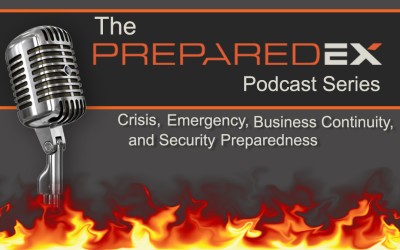
The business you work for just let you know that there has been a financial crisis and they have to let go of 20% of all employees. You have 1 hour before the media holds a press conference and interviews you as a representative of the company. What are you going to do?
Crisis communication is a field of public relations centered on effectively managing inevitable risks and crises within an organization. Emergency situations are a frequent occurrence for established and large businesses and require proper preparation, management and effective communication. PreparedEx is an online resource that publishes articles, podcast episodes and emergency simulations to help companies build crisis resilience through preparedness exercises. Their team is composed of crisis communication experts that have real-life public relations experiences dealing with emergency situations. There are 3 aspects of crisis communication that PreparedEx discusses on their website; crisis preparedness, crisis management, and crisis resilience. First, we will start by briefly explaining 5 of the most common types of business crises as described on PreparedEx.
5 Different Types of Business Crises
Personnel Crisis
A personnel crisis is when the personnel or stakeholders of a company are caught engaging in illegal activities or unethical behavior. An example of this might include using racial slurs or sexual assault.
Technological Crisis
When a company has malfunctioning, compromised or vulnerable software this is called a technological crisis. This includes any cyber attacks on company data.
Financial Crisis
A financial crisis occurs when a business accumulates debt or experiences significant losses. These crises can happen internally and externally through insider-trading, poor finance management or decreased sales.
Natural Crisis
A natural crisis is 100% external and unavoidable and caused by natural disasters. This includes flooding, earthquakes or disease pandemics.
Organizational Misconduct Crisis
An organizational crisis is when company managers make a decision on behalf of the company without considering the negative consequences to stakeholders. This may include withholding information from customers, making false promises about products, or taking bribes.
In preparation for some of these crises, PreparedEx recommends that companies establish crisis teams to divide the tasks that come with emergency situations. Crisis preparedness also involves identifying risk factors to the company. What problems are most likely going to arise? Injuries, natural disasters, fraud? Lastly, PreparedEx has exercises that simulate different crises for businesses to practice their public relations skills.
For crisis management, PreparedEx provides podcasts about the most common challenges about managing emergency situations. They urge business owners to share critical information with their internal and external publics at the proper times using the proper channels. PreparedEx pushes response effectiveness, monitoring the crisis will maximize a company’s power to manage any situation.
Crisis resilience is the process a company goes through to recover their reputation and brand after a crisis. PreparedEx covers crisis resilience that explores operational, community and reputation recovery.
PreparedEx has hundreds of other topics relating to crisis communication. Here are just a few examples of other crisis communication resources they offer public relations professionals!
- Leadership in Crisis: A Culture of Preparedness
- Technology in Emergency Management
- Pandemic Planning and Risk Communications
- Enhancing Response Effectiveness Through Monitoring and Corrective Actions
- Common Crisis Management Gaps
- Disaster Planning
- 10 Benefits of Crisis Simulation Exercises
- Five Essentials for an Effective Crisis Plan
